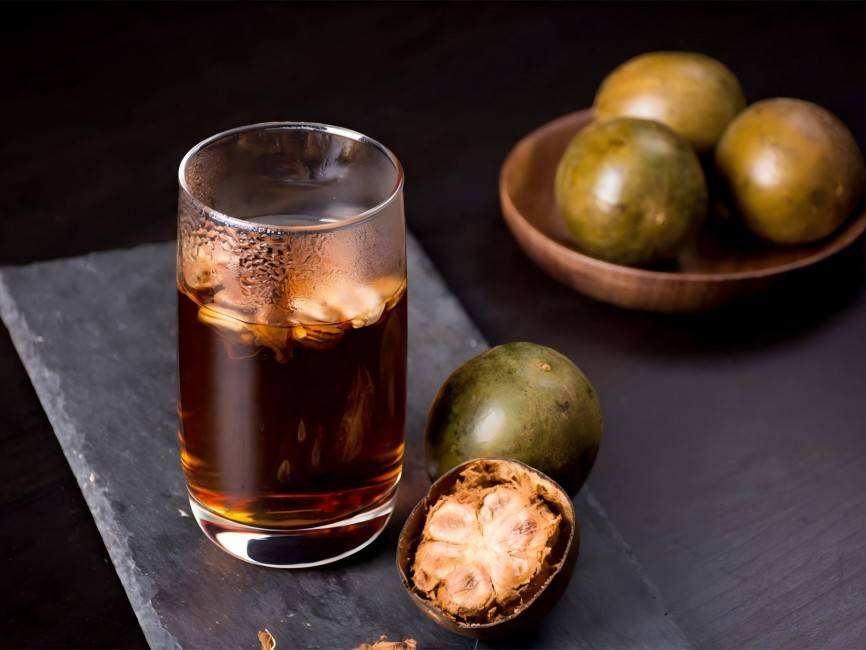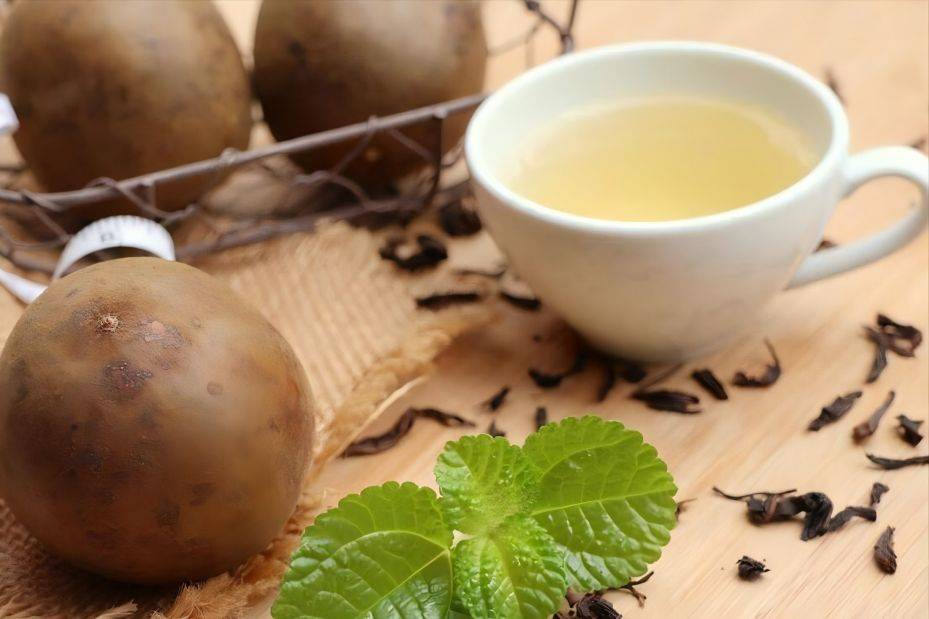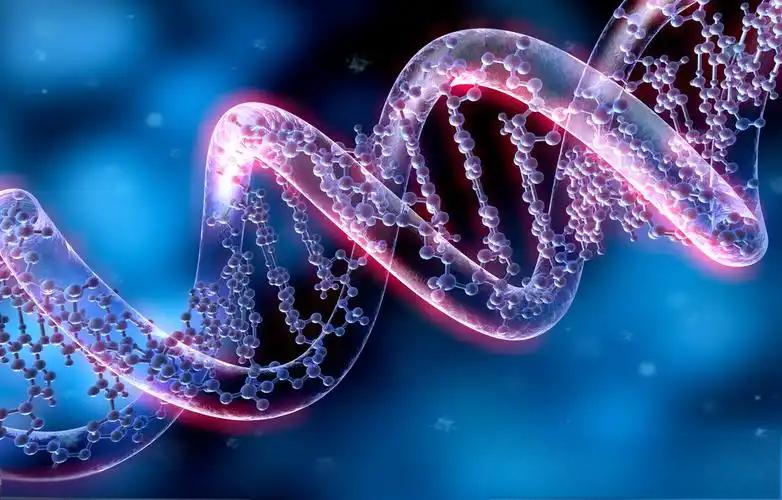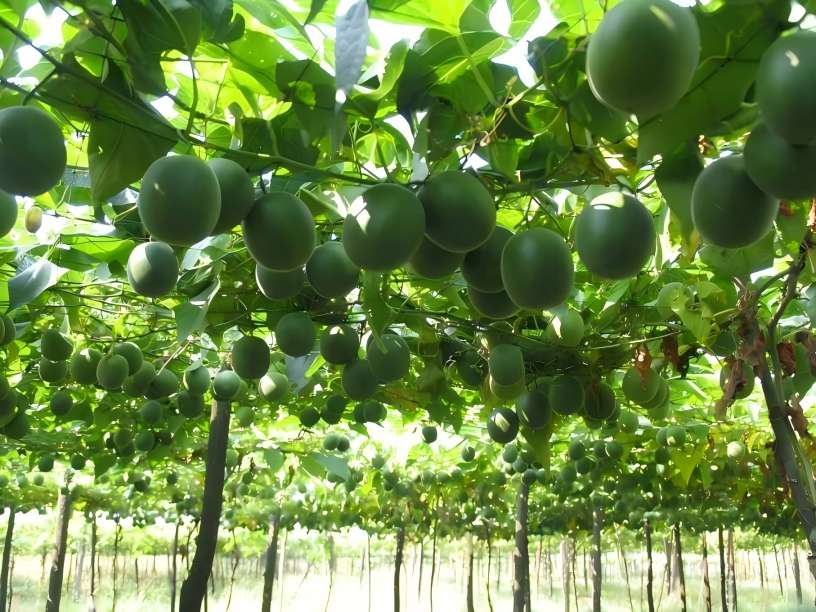How to Extract Mogroside?
Siraitia grosvenorii, a perennial vine in the gourd family, is a medicinal and edible plant unique to China, mainly distributed in tropical and subtropical regions such as Guangxi, Guizhou, and Hunan[1]. According to records, the Luo Han Guo fruit has a medicinal history of more than 300 years in China[2]. Traditional medical research has shown that Luo Han Guo has the effects of clearing away heat, relieving coughs, resolving phlegm, nourishing the lungs, generating body fluid to quench thirst, and detoxifying the intestines by promoting bowel movements. The Chinese Pharmacopoeia included it as a commonly used traditional Chinese medicine in 1977[3-4].
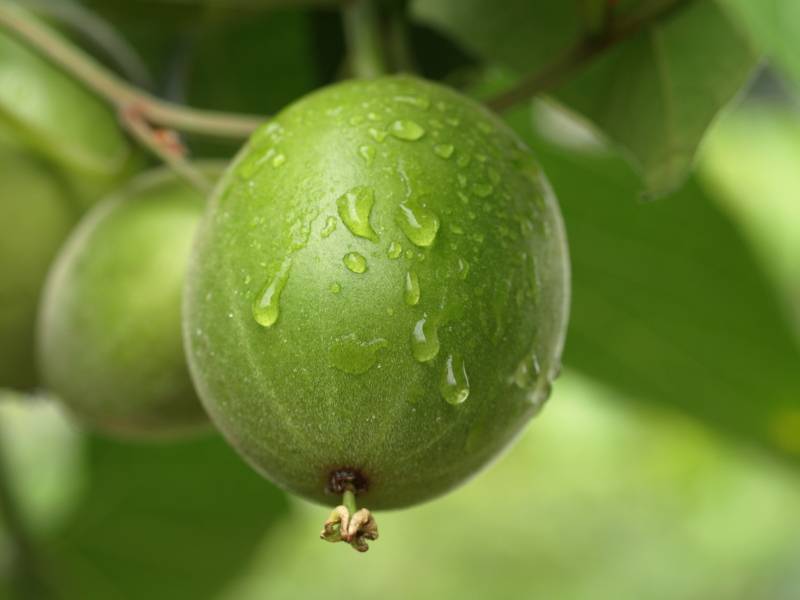
The isolation and identification of the ingredients of Luo Han Guo found that it contains a variety of fatty acids, essential amino acids, flavonoids and a large number of triterpenoid glycoside compounds [5-7]. Mogroside is the main component of the triterpenoid compounds in Luo Han Guo. It is a non-sugar substance with a strong sweet taste, and its sweetness is about 300 times that of an equivalent amount of sucrose [8]. Modern pharmacological studies have shown that mogroside also has various biological activities such as regulating blood sugar balance, fat metabolism, anti-oxidation and improving immunity [9-11]. Therefore, mogroside has great application prospects in food additives, functional foods and Chinese medicine that can be used as food or medicine. This article mainly provides a brief review of the physicochemical properties, extraction methods, physiological activities and development and application of mogroside.
1 Structure and physicochemical properties of Mogroside
Mogroside, also known as Luohanguo Sweetening Factor and Luohanguo Saponin, has the molecular formula C66H112O34 and a relative molecular weight of 1,449.6. It is a triterpene glucoside, with the aglycone being a triterpene alcohol. two glucoside side chains consisting of four or fewer glucose units are linked to the aglycone by β-glycosidic bonds. The bonds between the glucose units are mainly β-1,6 and β-1,2 glycosidic bonds. The structural formula is shown in Figure 1.
Mogroside has the characteristics of being highly sweet, low in calories, and non-fermentable. Its content is 3.8% to 3.9% of the dried fruit of Luohanguo. It is a light yellow powder that is easily soluble in water. It remains undamaged when continuously exposed to an environment of 120°C for 25 hours. Its properties are not affected by pH when in use [12].
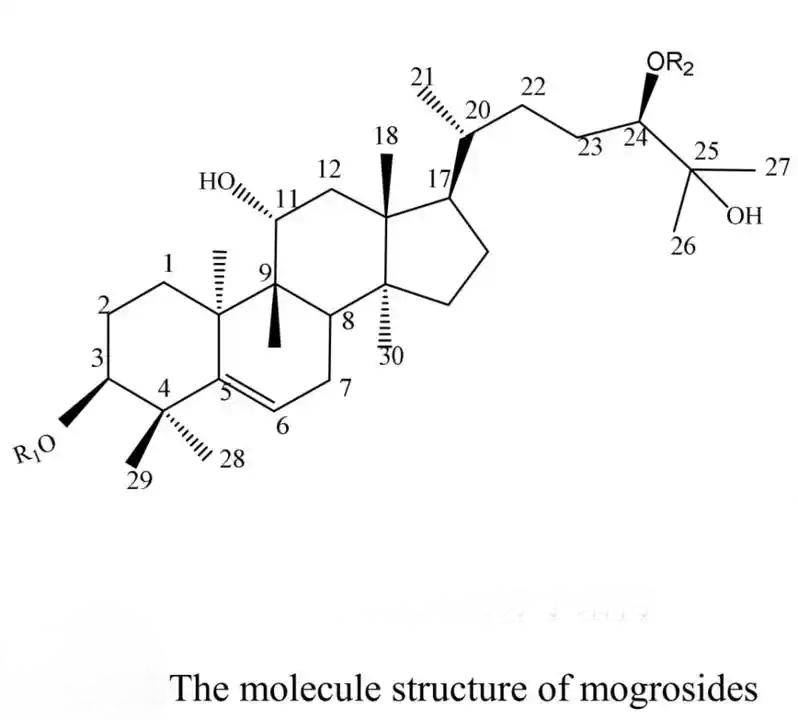
2 Extraction of Mogroside
With the wide application of Mogroside in the fields of food, medicine and functional foods, the use of effective extraction and separation methods to improve the yield of Mogroside, maximize the utilization of Luohanguo resources, and promote the industrial production of Mogroside has attracted people's attention. In recent years, Mogroside from Luo Han Guo has usually been extracted using direct boiling or boiling in ethanol, microwave and ultrasound-assisted extraction, flash extraction, etc.
2.1 Boiling method for extracting Mogroside
The original extraction methods for mogroside were direct boiling or ethanol extraction. It was found that the dried fruit of Luohanguo contains 13.5% glucose, 10.0% protein and 10.0% fructose. These substances are not easily soluble in ethanol solution, and as the ethanol concentration increases, the amount of dissolved solids decreases instead [13]. Li Yanqun [14] and others used Luo Han Guo produced in Guangxi as the raw material, and used water and ethanol of different concentrations as solvents, with a material-to-liquid ratio of 1:6 (g/mL), and extracted at 70 °C for 1 h to obtain a crude Mogroside extract. C OH)2 was used as a clarifier, clarified at room temperature, and then decolorized slowly at 25 °C using strong base resin D290 or D280. Finally, 50% ethanol aqueous solution was used to desorb Mogroside from the adsorption resin. It was found that the yield of Mogroside was highest when water was used as the solvent, up to 2.4%, and the quality of Mogroside after clarification and decolorization was greatly improved.
2.2 Microwave and ultrasonic-assisted extraction of mogroside
Microwave-assisted extraction uses electromagnetic waves with a frequency between 300 MHz and 300 GHz to partially disrupt the cells of the Luo Han Guo tissue. Microwaves have penetrating and heating properties, and can heat from both the inside and outside at the same time, greatly reducing the resistance of the extract to the blocking and diffusion process, thereby accelerating the dissolution of mogroside in the solvent [15]. Zhu Xiaoyun [16] and others compared the effects of conventional boiling and microwave extraction methods on the yield of mogroside. The results showed that the optimal extraction conditions for the microwave method were a liquid-to-material ratio of 1:8 (g/mL), a microwave output power of 750 W, and an extraction time of 15 min. The efficiency of microwave extraction of mogroside was significantly better than that of the conventional boiling method, The yield of mogroside reached 4.8%, which is a time-saving, energy-saving and easy-to-operate extraction method.
Ultrasonic-assisted extraction uses the linear alternating vibration of ultrasonic waves and the radiated pressure along the direction of sound wave propagation to destroy the cells and cell membrane structure of the raw material of Luo Han Guo, promoting the faster and greater release of mogroside from the raw material [17]. Li Junsheng [18] and others used ultrasonic extraction to extract Mogroside from powdered Luo Han Guo raw materials. The study found that the optimal ultrasonic extraction conditions were: 80 W (50 kHz) ultrasonic treatment for 80 minutes, and the yield of Mogroside could reach 3.4%. This shows that ultrasonic treatment can significantly increase the yield of Mogroside. In addition, the frequency of the ultrasound also has a significant effect on the yield of mogroside. The yield is highest when the ultrasonic vibration frequency resonates with the vibration of the medium.
2.3 Flash extraction method for extracting mogroside
Flash extraction is a relatively new technique for extracting traditional Chinese medicine. The principle is that in the presence of an appropriate solvent, the use of high-speed mechanical shearing force and ultrafast dynamic molecular osmosis rapidly destroys cell tissue, causing the chemical composition (or active ingredients) inside the tissue cells to quickly reach an internal and external balance. The purpose of extraction is achieved by filtration [19]. Compared with traditional methods, it has the advantages of being efficient and fast, requiring no heating, not destroying the ingredients, and being suitable for various solvents [20]. Liu Zhao [21] and others optimized the Mogroside flash extraction process through orthogonal experiments, and used high performance liquid chromatography (HPLC) to test and verify the purity of the purified sweet glycoside samples. The optimal extraction conditions were obtained: a liquid-to-material ratio of 1:20 (g/mL), a blade speed of 6,000 r/min, a temperature of 40°C, an extraction time of 7 min, and 4 extractions. The yield of the sweet glycoside was up to 6.9%; the purity of the obtained mogroside was above 92%.
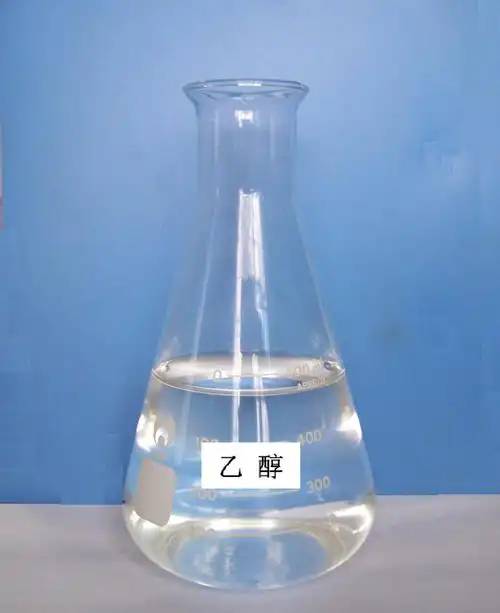
3 Physiological activity of mogroside
The medicinal history of Luo Han Guo in China can be traced back 300 years. Traditional Chinese medicine believes that it has the effects of moistening the lungs to relieve coughs, cooling the blood and lubricating the intestines, and is used to treat lung fire and dry coughs, sore throat and loss of voice, dry intestines and constipation, etc. Modern pharmacological studies have found that Mogroside has physiological activities such as lowering blood sugar, anti-oxidation, protecting the liver, lowering blood fat and weight loss, lubricating the intestines and relieving constipation, and anti-inflammatory.
3.1 Hypoglycemic effect
Mogroside is extremely sweet but low in calories, and its consumption does not cause an increase in blood glucose in the body. This characteristic has attracted much attention from researchers [22-25]. Xu Qing et al. [26] gave 200 mg/kg of 30% Luo Han Guo sweeteners to volunteer subjects at one time, which is equivalent to 20 times the amount added to normal foods (10 mg/kg). By comparing the blood glucose levels of the subjects before and after taking the medicine, the results showed that there was only a very small difference in blood glucose levels before and after taking the medicine, indicating that the conversion of mogroside to glucose in the body was not significant. He Chaowen et al. [27] used mice as experimental subjects to study the effect of mogroside on blood glucose regulation. The results showed that a one-time administration of mogroside in mice could significantly inhibit the blood glucose production of starch and sucrose in polysaccharide foods, but had no significant effect on the rise in blood glucose caused by glucose. After mice were given Mogroside by gavage for 7 consecutive days, the blood glucose production of both starch and glucose was suppressed, and the peak blood glucose or the blood glucose production index (GI) decreased significantly. In addition, the concentration of Mogroside showed a dose-dependent inhibitory effect on α-glucosidase activity. Therefore, Mogroside can regulate the body's blood sugar balance by inhibiting the conversion of food glucose and increasing postprandial insulin levels.
3.2 Antioxidant effect
Free radicals are in a free state in living organisms, and the lipid peroxidation reactions they induce are closely related to the occurrence of many diseases. Recent studies have found that Mogroside has the effect of scavenging free radicals and resisting lipid peroxidation [28-29]. Qi Xiangyang et al. [30] used the anti-superoxide anion reagent kit method, colorimetry and the D-deoxyribose method to analyze the effect of Mogroside in scavenging free radicals and resisting lipid peroxidation. The results showed that Mogroside can inhibit lipid peroxidation in rat liver tissue and protect against Fe2+ and H2O2-induced liver tissue peroxidation damage, indicating that Mogroside can effectively scavenge free radicals. Zhao Yan, Zhang Liqin, et al. [31-32] used a high-fat model mouse to study the effect of Mogroside on serum glutathione peroxidase (GSH-Px), superoxide dismutase (SOD) and malondialdehyde (MDA). The results showed that Mogroside can significantly increase the serum GSH-Px and SOD activity of high-fat model mice, and significantly reduce the serum MDA content, indicating that Mogroside has strong free radical scavenging capacity and lipid peroxidation resistance.
3.3 Hepatoprotective effect
Mogroside has a protective effect on the liver [33]. Xiao Gang et al. [34] used rats and mice as experimental subjects, respectively. The mice were given Mogroside once a day for 7 days. After the last administration, 1 h later, the intragastric administration group and the model group were injected intraperitoneally with 0.08% CCl4 once. Twelve hours after modeling, blood was taken to measure the levels of alanine aminotransferase (ALT) and aspartate aminotransferase (AST) in the mouse serum, and pathological changes in the liver tissue were observed.
For rats, CCl4 was used to continuously model liver damage for eight weeks to form a rat model of chronic liver injury, and Mogroside was used to observe the effects on the activity of ALT and AST in rat serum, the levels of hyaluronic acid (HA), type III procollagen amino-terminal peptide (PIII NP), hydroxyproline (Hyp) content, liver tissue superoxide dismutase (SOD), glutathione (GSH-Px) activity and malondialdehyde (MDA) content. The results showed that Mogroside can reduce the ALT and AST activities in the serum of mice with acute liver injury and significantly reduce the degree of pathological changes in the liver tissue. For chronic liver injury caused by CCl4 in rats, Mogroside can reduce the ALT and AST activities in the serum; reduce the HA, PⅢNP, and HyP contents; increase the SOD and GSH-Px activities in the liver tissue; and reduce the MDA content in the liver tissue. Explanation Mogroside has a protective effect on acute liver injury in mice caused by CCl4, and has a preventive effect on chronic liver injury in rats caused by CCl4, as well as a certain anti-hepatic fibrosis effect.
3.4 Lipid-lowering and weight-loss effect
The sweetness of mogroside is not a sugar, and its use as a sweetener can reduce glucose uptake. As long as the intake of carbohydrates is controlled, it can inhibit the synthesis of subcutaneous fat and promote lipid metabolism, thereby removing subcutaneous fat and achieving a weight loss effect. Zhu Xiaoyun et al. [35] used rats as experimental subjects, and randomly divided them into a blank group, a model control group, and an experimental group. The experimental group was gavaged with Mogroside, and the blank group and model control group were gavaged with distilled water, respectively, for 28 consecutive days. During the feeding process, the weight and food intake of the rats were recorded weekly. At the end of the experiment, the body length was measured, the body fat was removed by laparotomy and weighed, and the fat/body ratio was calculated. Blood was also collected at the same time, the serum was separated, and the serum triglyceride and total cholesterol levels were measured. The results showed that the test group had a 11.9% decrease in body weight compared to the control group, a 37.8% decrease in low-density lipoprotein cholesterol (LDL-C), a 38.9% decrease in serum triglycerides, a 35.7% decrease in body fat, and a 21.2% decrease in total cholesterol, indicating that Mogroside has a significant lipid-lowering and weight-loss effect.
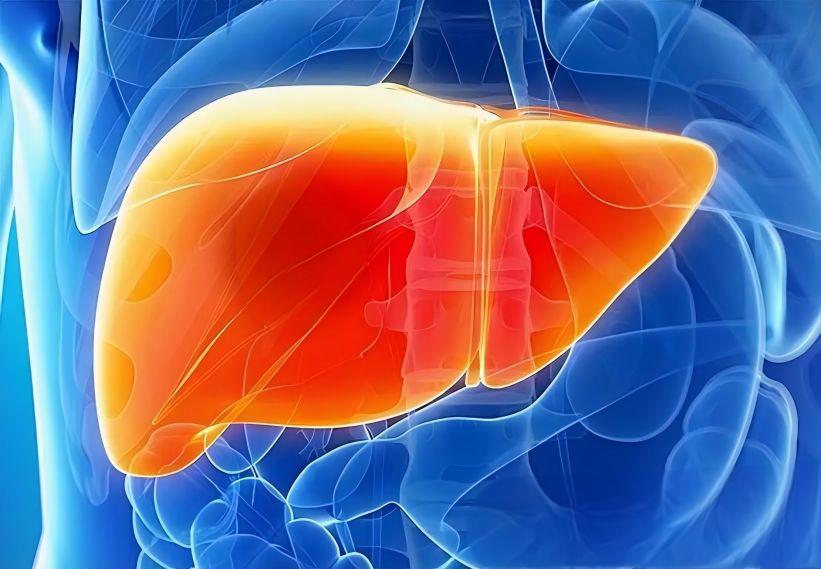
3.5 Other activities
According to literature reports, Mogroside has an inhibitory effect on the early antigen of the Epstein-Barr virus induced by the tumor promoter TPA [36], and can also inhibit the production of liver cancer by inhibiting the expression of the Cyp1a1 gene [37]. In a lipopolysaccharide-activated mouse macrophage model, Mogroside can significantly inhibit the protein and mRNA expression of inducible nitric oxide synthase and cyclooxygenase-2, and has anti-inflammatory activity [38]; Mogroside can increase the percentage of peripheral blood acidic α-acetonefluorophenyl ester-positive lymphocytes and the ratio of spleen-specific rose bengal ring cells, improve the phagocytic function of cyclophosphamide immunosuppressed mouse macrophages and the proliferation of T cells, and has the effect of enhancing immunity [39].
4 Application and development of Mogroside
Mogroside is a new type of low-calorie, non-sugar sweetener that has been widely used in the food, additive and health product industries in recent years [40]. In the 1990s, the US Food and Drug Administration approved that mogroside could be added to foods as a sweetener. In 1996, China also approved mogroside as a sugar substitute for obese and diabetic patients, which can partially or completely replace sucrose and be used in the health product industry [41-42].
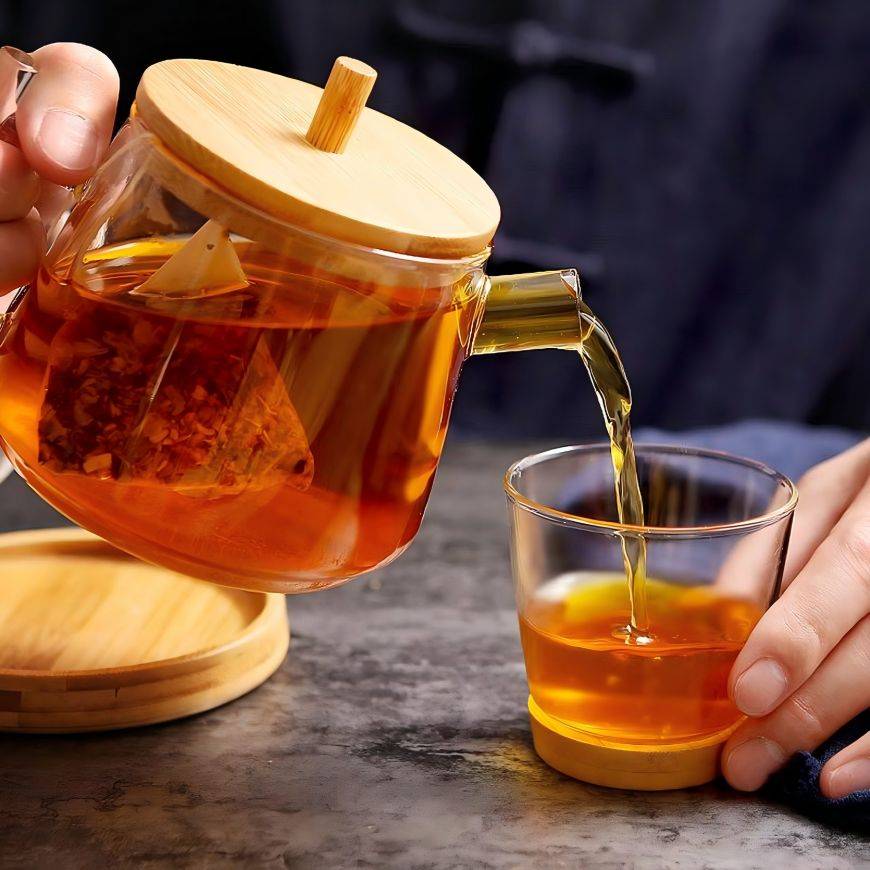
Currently, Mogroside is permitted as a food additive in the United Kingdom, South Korea, Japan, Singapore and other countries [43]. Japan is the largest importer of Mogroside. Mogroside is used in Japan as a health product, and can be made into weight-loss foods, blood sugar-lowering foods, immunity-enhancing foods, anti-allergy particles, etc.; as a sweetener, it can be processed into throat lozenges, functional drinks, syrup and effervescent tablets; as an additive, Mogroside can be added to the solution used to make pickles, which can greatly reduce the amount of salt used, and the pickled vegetables will be crisp and fresh with an attractive bright color [44-45]. In the UK, mogroside is often mixed with pueraria root extract to make a low-sugar solid drink. After being dissolved, it has a fresh smell and health benefits such as relieving fatigue, promoting digestion and lowering blood pressure.
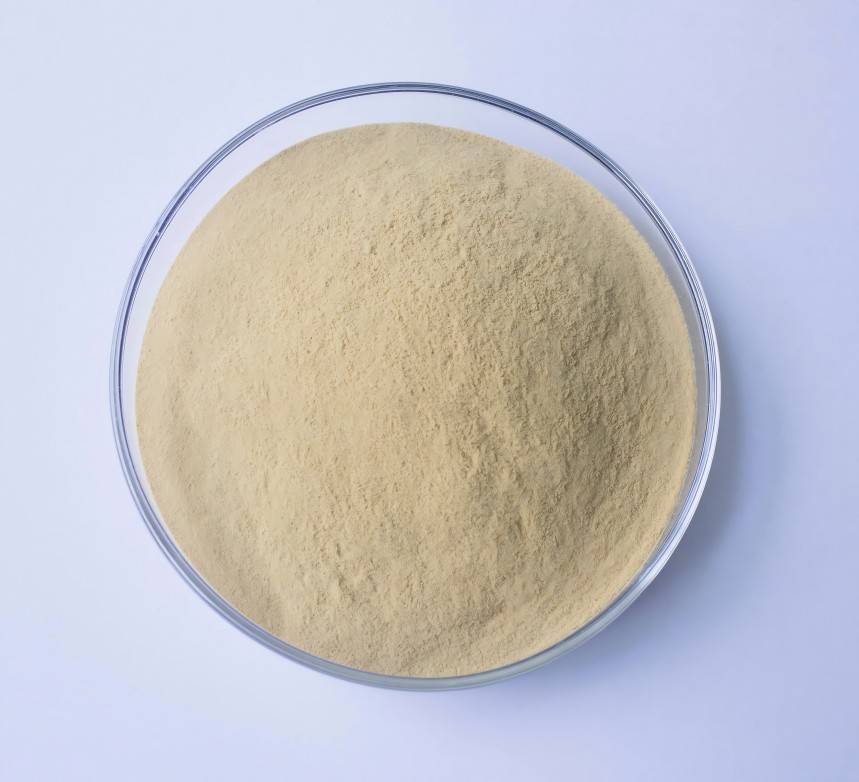
In addition, soluble starch mixed with mogroside can be processed into cube sugar, which can adjust the sweetness of brewed coffee and also reduce calorie intake. In China, traditional Chinese medicine often uses mogroside as a Chinese medicine ingredient, which has the effect of moistening the lungs to relieve coughs, cooling the blood, and moistening the intestines to promote bowel movements. Since the 21st century, Mogroside has also been widely used in China's food industry. Adding it to starch gummies can produce sweets with excellent texture, flavor, and color; adding it to biscuits can improve the structure and texture of the biscuits, making them smooth and non-dry in the mouth; adding it to dairy products can promote the health of children, patients, and people in sub-health.
In recent years, more and more physical and chemical activities of Mogroside have been confirmed. Using the physiological activities of Mogroside, foods with special effects such as anti-diabetes, anti-aging, constipation prevention, lipid-lowering and weight loss, and caries prevention can be developed, and the application of Mogroside can be transformed from traditional medicine-food dual-use foods to new functional health foods. It can be predicted that Mogroside will have broad market prospects in the future, and there is still much to be done in the further development and utilization of Mogroside.
Reference:
[1] Wang J M,Xu Q T,Kang W Y. Research progress on chemical com - ponents and thepharmacology of Forsythia suspense Vahl[J]. Natl- Prod Res Dev,2007,19:153-157
[2] Yuji M,Takahisa O, Yasushi AS, et al. Digestion and absorption of Siraitia grosvenori triterpenoids in the rat[J]. Biosci Biotechnol Bio- chem, 2010,74(3): 673- 676
[3] Zhu Hua, Chen Xiaobo, Liang Changxiang, et al. Overview of research on Luo Han Guo [J]. Chinese Medicine Information Journal, 2008, 15(1): 100-102
[4] National Pharmacopoeia Commission. Pharmacopoeia of the People's Republic of China: Part 1 [M]. Beijing: China Medical Science and Technology Press, 2010: 197
[5] Liao Riquan, Li Jun, Huang Xishan, et al. Research on the chemical composition of Luo Han Guo [J]. Journal of Northwest Botany, 2008, 28(6): 1250-1254
[6] Li Wend, Jian Jiangbo. Development and application of the functional sweet plant Luo Han Guo [J]. China Food Additives, 2007(6):120-121
[7] Sayaka M,Meilan J,Yasuaki D, et al. Suppressive effect of Siraitia grosvenori extract on dicyclanil-promoted hepatocellular prolifera - tive lesions in male mic[J]. J.Toxicol Sci,2009,34(1):109-118
[8] Ju Wei, Cheng Yuyan, Zhang Jian. Overview of research on Luo Han Guo [J]. Guangxi Light Industry, 2001(4): 4-6
[9] Xu Q, Chen XY, Deng LD, et al. Antioxidant effect of mogrosides a - gainst oxidative stress imduced bypalmiticacid in mouse insulinoma NIT -1 cells[J]. Brazilian Journal of Medical and Biological Re - serch,2013(46):949-955
[10] Pana M H, Yanga J R, Tsaia M L, et al. Anti-inflammatory effect of Momordica grosvenori Swingleextract through suppressed LPS -in- duced upregulation of inosand COX -2 in murine macrophages [J]. FuncFoods,2009,1(1):145-152
[11] Shi D F, Wang Y M, Chen S, et al. Protective effectsand mechanisms of mogroside V on LPS -induced acute lung injury in mice[J]. Phar- maceutical Biology,2014,52(6):729-734
[12] Li Jun. Mogrosides [J]. China Food Chemicals, 1997(2):39-41
[13] Nong Yiqing, Jiang Lin, Huang Haibin. Research on the extraction process of Mogroside [J]. Shizhen Traditional Chinese Medicine 2007,8(9):2145-2165
[14] Li Yanqun, Wang Ce, Wang Wensheng. Study on the extraction process of mogrosides [J]. Natural Products Research and Development, 1995, 7(4): 87-90
[15] Wang Xiaoling. Application of microwave technology in the production of natural medicines [J]. Traditional Chinese Medicine Research and Information, 2002, 4(1): 22-24
[16] Zhu Xiaoyun, He Chaowen. Application of microwave technology in the extraction of fresh Luohanguo glycosides [J]. Guangxi Light Industry, 2002(2):11-13
[17] Li Junsheng, He Ren, Hou Gefei, et al. Effect of ultrasonic treatment on improving the extraction rate of Mogroside [J]. Food and Fermentation Industry, 2004, 10(29): 136-138
[19] Liu Y Z.Principle and practice of smashing tissueextraction and herbal blitzkrieg extractor[J].Chin J Nat Med,2007,5: 406-408
[20] Wang Z B Zhao Y Q.Studies on the smashing tissue extraction pro - cess of the total saponins ofCentella Asiatica[J]. Mod Chin Med,2009, 11(2):36-38
[21] Liu Zhao, Rong Yonghai, Wang Zhibin, et al. Extraction of Luo Han Guo glycosides by flash extraction technology [J]. Natural Product Research and Development, 2011, 23 (3): 561-564
[22] Hironobu Y,Jihe N,Yasuaki D, et al. Modifying effects of Siraitia - grosvenori extract on piperonyl butoxide -promoted hepatocarcino- genesis in rats[J]. J.Toxicol.Sci,2008,33(2):197- 207
[23] Qi X Y,Chen W J, Zhang L Q, et al. Mogrosides extract from Siraitia grosvenori scavenges free radicals in vitro and lowers oxidative stress, serum glucose, and lipid levels in alloxan-induced diabetic mice[J]. Nutr Res,2008,28(4):278-284
[24] Song F,Qi X, Chen W, et al. Effect of Momordica grosvenori onox - idative stress pathways in renal mitochondria of normal and alloxan- induced diabetic mice. Involvement of heme oxygenase-1[J]. Eur J Nutr ,2007,46(2):61- 69
[25] Suzuki YA, Tomoda M, Murata Y, et al. Antidiabetic effect oflong - term supplementation with Siraitia grosvenori on the spontaneously diabetic Goto-Kakizakirat[J]. Br J Nutr,2007,97(4):770-775
[26] Xu Qing, Liang Ronggan, Su Xiaojian, et al. Effect of mogroside on blood glucose and liver enzyme activity in normal people [J]. Food Science, 2007, 28(6): 315-317
[27] He Chaowen, Yao Meicun, Xia Xing, et al. Research on the regulatory effect of fresh mogroside on mouse blood glucose [J]. Modern Food Science and Technology, 2012, 28(4): 382-386
[28] Chen Zhuang, Xiao Gang. Experimental study on the effect of Mogroside on D-galactose-aged mouse model [J]. Medical Frontiers, 2012, 2(10): 28-29
[29] Grootwassink JW, Sing L K.Inducible and constitu-tive formation of β-fructofuranasidase (inulase) in batch and continuous of the yeast Kluyveromyces frag-ilis[J]. J General Microb,1983,129:31-35
[30] Qi Xiangyang, Chen Weijun, Zhang Liqin, et al. Research on the scavenging of free radicals and anti-lipid peroxidation of Luo Han Guo saponins [J]. Chinese Agricultural Science, 2006, 39(2): 382-388
[31] Zhao Yan, Zhao Yan, Liu Guoyan, et al. In vivo antioxidant effects of Luo Han Guo water extract and its glycosides [J]. Food Research and Development, 2012, 33(2): 174-176
[32] Zhang Liqin, Qi Xiangyang, Chen Weijun, et al. Antioxidant activity of Luo Han Guo extract [J]. Food Science, 2006, 27(1): 213-216
[33] Jiang Hui, Shang Lili, Xu Songling, et al. The protective effect of Ganle particles on liver fibrosis in rats [J]. Chinese Journal of Experimental Formulae, 2011, 17(12): 167-170
[34] Xiao Gang, Wang Qin. Experimental study on the hepatoprotective effect of Mogroside [J]. Chinese Journal of Experimental Formulae, 2013(2): 196-200
[35] Zhu Xiaoyun, He Weiping, Xia Xing, et al. Research on the hypolipidemic and weight-loss effects of Luo Han Guo SOSO sweet [J]. Guangxi Light Industry, 2011(6):12-17
[36] Takasaki M, Konoshima T, Murata Y, et al. Anticarcinogenic activity of naural sweeteners, cucurbiane glycosides,from Momordica grosvenori[J]. Cancer Lett, 2003,198(1):37-42
[37] Sayaka M, Meilan J, Yasuaki D, et al. Suppressive effect of Siraitia grosvenori extract on dicyclanil -promoted hepatocellular prolifera - tive lesions in male mice[J]. J Toxicol Sci,2009,34(1):109-118
[38] Pana MH, Yanga JR, Tsaia ML, et al. Anti -inflammatory effect of Momordica grosvenori Swingleextract through suppressed LPS -in - duced upregulation of inosand COX -2 in murine macrophages [J].Func Foods,2009,1(1):145-152
[39] Chen Weijun, Song Fangfang, Liu Liegang, et al. Effects of Luo Han Guo saponin extract on cellular immune function in mice with type 1 diabetes [J]. Journal of Nutrition, 2006, 28(3): 221-225
[40] Di R, Huang M T, HO C T, et al. Anti -inflammatoryactivities of mogrosides from Momordica grosvenori inmurine macrophages in- terferon-α production by pichia pastoris with an ethanol on -line measurement basedDO-stat glycerol feeding strategy[J]. Chem Tech- nol Biot,2014(89):10-16
[41] Hu Guohua, Ma Zhengzhi. Development status and prospects of functional high-potency sweeteners in China [J]. China Food Additives, 2008(S1): 68-71
[42] Chen X Y, Liao Z X, Song Y J, et al. Protective effect of mogroside on rat liver fibrosis induced by multiple hepatotoxic factors [J]. Youjiang Medical Journal,2013,41(6):795-797
[43] Chen Yao, Jia Enli. Research progress on the chemical composition and pharmacological effects of Luo Han Guo [J]. Journal of the Chinese People's Liberation Army, 2011(2): 171-174
[44] Wan Yanjuan, Wu Junlin, Wu Qingping. Research progress on the physiological functions and food applications of the functional sweetener mogroside [J]. Food and Fermentation Technology, 2015(5): 51-56
[45] TANG Qi,MA Xiaojun,MO Changming, et al. An effi-cient approach to finding Siraitia grosvenorii triterpene bio -synthetic genes by RNA-seq and digital gene expression a-nalysis[J]. BMC Genomics, 2011,12: 343


 English
English French
French Spanish
Spanish Russian
Russian Korean
Korean Japanese
Japanese